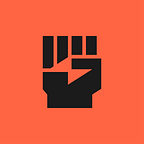Philosophy of $POWER
People come together in various ways to form communities. Most often, this occurs due to physical proximity, where people living close to each other naturally gather into groups. These groups then establish their operating rules, which are formalized as laws and embedded in their culture. This process is ongoing and can lead to the formation of larger groups, even up to the level of states or state unions. Within these communities, internal dynamics and hierarchies naturally emerge, reflecting patterns of human behavior. Non-conforming behavior tends to be marginalized, giving rise to a more uniform societal fabric governed by established rules such as laws and religious customs. Regardless of how communities are formed, there is always a unifying factor at play, although the rules of operation can vary widely and may not always make sense to outsiders.
The advancement of technology has enabled us to explore the idea of creating a protocol for interactions within human groups. The concept of DAO (Decentralized Autonomous Organization), originating from decentralized blockchain-based community building, suggests that we can shift social interactions onto a technological foundation. This entails either replacing or augmenting social consensus with a technical one.
For the first time in history, we can attempt to construct communities based on explicit principles that render community rules transparent, enforceable through technology, and beneficial to each individual member as well as the community as a whole. This concept underlies the Power protocol, which comprises a collection of loosely interconnected DAOs that build a broader community based on principles of inclusivity, accountability, and enforceable decision-making, all facilitated by decentralized blockchain technology.
Human society inherently exhibits hierarchy, a product of our evolutionary history that cannot be completely eradicated by technology. Instead, a more technological approach to human interaction aims to harmonize this hierarchy rather than entirely eliminate it. Transparency and inclusivity serve as checks and balances for different groups of decision-makers, while accountability, often referred to as “skin in the game,” helps identify effective decision-makers among community members. The objective is to create a more balanced and inclusive hierarchy, not to establish an entirely flat structure.
The Power DAO consists of the main (mother) DAO and various child DAOs. The mother DAO encompasses all child DAOs and serves as the ultimate authority for resolving issues within the child DAOs. Each individual member of the mother DAO holds a finite voting power, collectively constituting the total voting power of the DAO, with an upper limit. This structure prevents situations akin to blockchain Sybil attacks, where consensus can be manipulated by a large number of participants without any substantial resources.
To participate in the mother DAO, individuals must stake $power tokens, which also function as governance tokens when staked. This mechanism limits the total voting power and provides an intrinsic incentive for community members to participate in the decision-making process, addressing the issue of voter apathy. While there is a cap on the total number of $power tokens, inflation continues, but only those participating in the voting process within the mother DAO receive staking interest in $power.
Child DAOs operate differently. They establish explicit accountability through a “skin-in-the-game” approach, wherein decision-makers must stake and lock their $power tokens within the child DAOs to partake in decision-making. Each DAO sets clear Key Performance Indicators (KPIs) at its launch. Successful KPI completion results in rewards in the form of $power tokens for decision-makers, augmenting their governance power. Failure to meet KPIs results in penalties, with their staked $power tokens being burned, effectively filtering out ineffective decision-makers.
By utilizing $power tokens as a governance tool and incentivizing user participation in governance while establishing a clear KPI-based incentive system for decision-makers, an ecosystem of interconnected DAOs is created. The mother DAO serves as the binding force, uniting them all into a single community governed by transparent rules. The unifying principle here is a bottom-up approach to governance. Instead of uniting people based on ethnicity or religion, the aim is to bring them together based on the principles of fair and transparent societal management, working toward common goals that benefit the majority.
The value of the $power token lies in its utility as a governance tool, which, in turn, gives it monetary value. It can be used as a currency within the community, with the community explicitly voting on the issuance of a certain amount of $power for transactions. Additionally, the mother DAO can maintain its treasury and interact with the treasuries of child DAOs, such as issuing new $power tokens for their treasury funds. Direct deposits into the mother DAO treasury in exchange for $power tokens are also possible.
Thus, the goal of mother DAO participants is to grow the mother DAO treasury by supporting the utility of $power. From a financial perspective, the mother DAO structure represents a community pooling its resources to increase an asset that belongs to each community member. The funds and profits from interactions with child DAOs are effectively used to enhance the value of the $power token, which derives its value from its use as a governance token within the main DAO and its affiliated DAOs.
